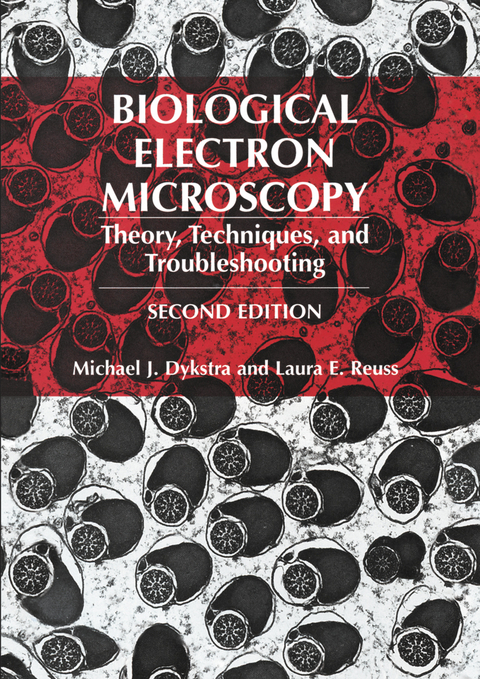
Biological Electron Microscopy
Kluwer Academic/Plenum Publishers (Verlag)
978-0-306-47749-2 (ISBN)
1 Specimen Preparation for Electron Microscopy.- 1 Techniques.- 2 Cryotechniques.- 2 Techniques.- 3 Ultramicrotomy.- 3 Techniques.- 4.- 4 Techniques.- 5.- 5 Techniques.- 6.- 6 Techniques.- 7 Support Films.- 7 Techniques.- 8 Replicas, Shadowing, and Negative Staining.- 8 Techniques.- 9 Transmission Electron Microscopy.- 10 Vacuum Systems.- 11 High-Voltage Transmission Electron Microscopes (HVEM).- 12 Intermediate Voltage Electron Microscopes (IVEM), Electron Tomography, and Single-Particle Electron Microscopy.- 13 Scanning Electron Microscopy.- 13 Techniques.- 14.- 15 Photography.- 15 Techniques.- 16 Digital Imaging and Telemedicine.- 17 Morphometry and Stereology.- 18 Photomicroscopy.- 18 Techniques.- 19 Laboratory Safety.- 20 General Sources for Information Concerning Microscopy.- 21.- Appendix A Computing Micrometer Bar Sizes.- Appendix B Calibrating the TEM and the SEM.- I. Transmission Electron Microscope.- II. Scanning Electron Microscope.- Appendix C Materials and Methods Write-Up Suggestions for Standard TEM and SEM Preparations.- I. Materials and Methods for Routine TEM Preparation.- II. Materials and Methods for Routine SEM Preparation.
| Erscheint lt. Verlag | 31.12.2003 |
|---|---|
| Zusatzinfo | XVIII, 534 p. |
| Verlagsort | New York |
| Sprache | englisch |
| Maße | 178 x 254 mm |
| Themenwelt | Naturwissenschaften ► Biologie ► Allgemeines / Lexika |
| Naturwissenschaften ► Physik / Astronomie ► Angewandte Physik | |
| Veterinärmedizin | |
| ISBN-10 | 0-306-47749-1 / 0306477491 |
| ISBN-13 | 978-0-306-47749-2 / 9780306477492 |
| Zustand | Neuware |
| Haben Sie eine Frage zum Produkt? |
aus dem Bereich



